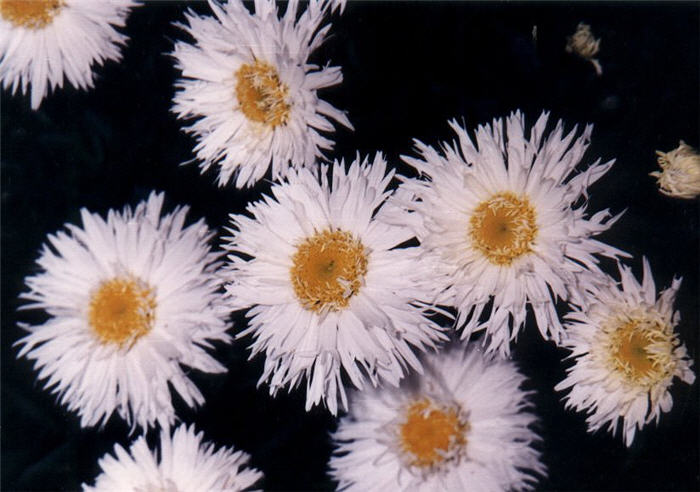| Botanical Name: Leucanthemum x superbum | |
| Common Name: Shasta Daisy |

-
Anatomy
-
Culture
-
Design
Plant Type
Perennial
Height Range
1-3'
Flower Color
Yellow, White
Flower Season
Spring, Summer, Fall
Leaf Color
Dark Green
Bark Color
n/a
Fruit Color
n/a
Fruit Season
n/a
Sun
Full, Half
Water
Medium, Extra in Summer
Growth Rate
Fast
Soil Type
Sandy, Loam
Soil Condition
Rich, Well-drained, Moist
Soil pH
Acid, Neutral
Adverse Factors
Attracts Bees
Design Styles
English Cottage, Meadow, Mediterranean, Ranch, Tropical, Woodland
Accenting Features
Showy Flowers
Seasonal Interest
Spring, Summer, Fall
Location Uses
Entry, Perennial Border, Patio, Raised Planter, Walkways
Special Uses
Container, Cut Flowers, Mass Planting
Attracts Wildlife
n/a
Information by: Stephanie Duer
Photographer: Steve Mullany/Chandler
Photographer: Steve Mullany/Chandler
-
Description
-
Notes
Shasta daisy may very well be the archetype flower with is distinct rays and sunny eyes. There are dozens (hundreds?) of daisy cultivars, with petal colors ranging from pure white to cream, to buttery yellow, arrayed singularly, doubled, or unbelievably frilly. Eyes are yellow to golden to green. Leaves are green, with older foliage lobed. They range in height from less than a foot tall to 40 inches, many with equal spreads. Not very drought tolerant, they still fit in a medium to low water perennial or cottage border.
Grow in well drained soil in full sun to a bit of shade. Adaptive to soil types, but over-watering or wet soils will cause it to flop or rot. Over head watering tends to cause them to flop. Some varieties benefit from staking. Deadheading prolongs the season of bloom. Formerly listed as Chrysanthemum maximum.